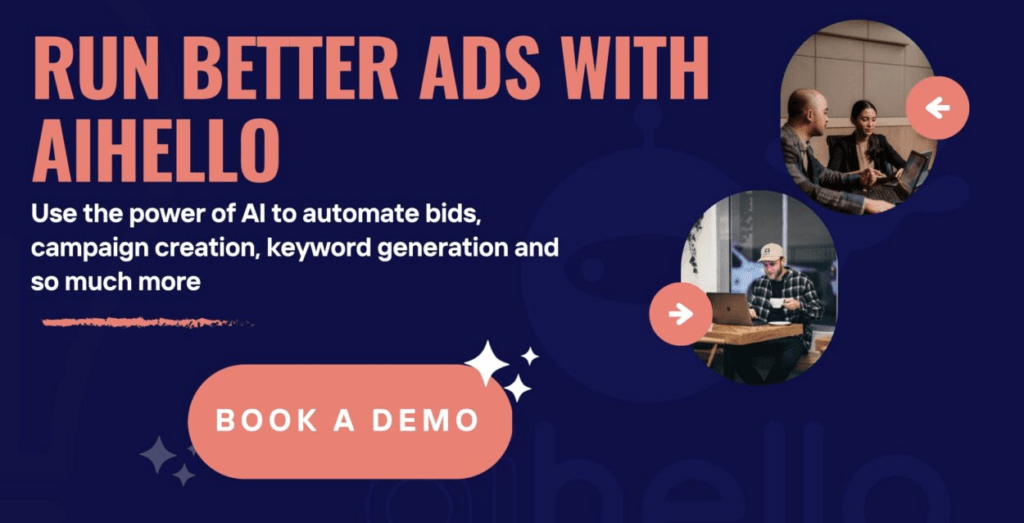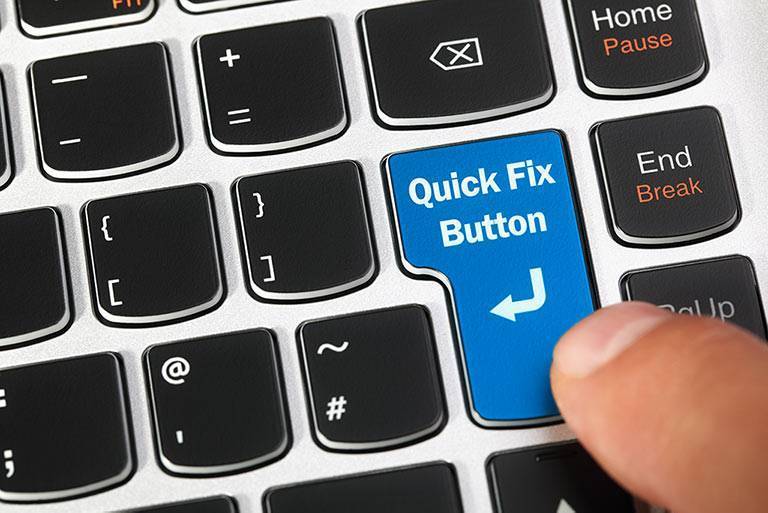Every business wants to get its products in front of as many people as possible. And there are instances when all you care about is raising awareness for your product or brand, such as during a product launch. During these times, you may want to enhance Impressions at any cost and present your goods to as many shoppers as possible, to reach the largest possible number of potential clients.
Every seller’s worst fear is low impressions and low click keywords. It’s the infamous keyword that we all stress over since it wastes our advertising dollars.
Today, we’ll learn what a low impression, low click term is, why it’s terrible for your Amazon business, and how to remedy it so you can build a stronger business with greater sales and profit margins. If this sounds appealing, keep reading!
What exactly is a low impression, low click keyword?
Simply put, A keyword with fewer than 2,500 impressions in the last 30 days is known as a low impression keyword. Keep in mind that this is dependent on each keyword’s monthly search volume.
A low click keyword is one that has received 0 to 5 clicks in the last 30 days and has a CTR of less than 0.18 per cent.
Ready to increase your sales?
Why is this bad for your Amazon Campaigns?
Keywords with low impressions and clicks are detrimental to your Amazon Ads business because they cost you money. We strongly encourage you to avoid squandering your money. When crawled by the A9 algorithm, they also lower your overall campaign score.
Impressions are one of the primary metrics used by Amazon to determine the success or failure of an advertising campaign. It’s also one of the first things you’ll see on your reports, so it can act as a barometer of how well your efforts are doing. You can check how well your Ads are functioning at a glance by regularly monitoring your Impressions.
Before moving on to solving the low impression problem, we must investigate what specific metric is underperforming.
3 Reasons Why Your Amazon Keywords Might Be Getting Low Impressions
These are the three main reasons why your Amazon Advertising account is experiencing low impressions:
- Inadequate Data – One possibility for a keyword with no impressions is when impressions are simply not gathered. When a bid is so uncompetitive that it isn’t even considered in the bidding pool, this can happen. It’s also possible that your product is so obscure that few people are looking for it. This can happen when you have a product that only appeals to a small group of people, leading you to employ overly narrow keywords.
- Poor SEO – Another reason for a lack of impressions for a term is if the keyword is not expressly specified in the listing. This indicates that the keyword is underutilised in SEO. If this is the case, the A9 algorithm’s crawlers will be unable to locate the keyword in the listing and categorise it as relevant to the search query. As a result, everything on your product page should urge customers to purchase your item. This includes your keywords. Unless Amazon believes your product is relevant to particular keywords, your ad will not be shown to buyers searching for those terms.
- Overcrowding – Another example of zero impressions is when a term is included in a campaign with too many keywords; it does not obtain views owing to the keyword polarisation of the most popular targets. If your Amazon keywords have a low number of impressions, your product isn’t getting enough attention. There will be fewer sales since there are fewer eyeballs on your stuff. And that is something nobody wants.
So How do you Increase Your Amazon Keywords’ Impression Ranks?
Now that you know why your Amazon keywords are getting low impressions, here are three techniques for improving your impressions rank. If your ads aren’t generating enough impressions, consider any of the following options.
Raising or Lowering Bids
When it comes to bids and budgets, there are two approaches. Most advertisers begin their campaigns with a low bid and gradually increase it. This is considered the safest option because it prevents you from mistakenly overbidding and incurring a loss during the early weeks of your campaign’s lifecycle when you’re still gathering data on your campaign and its keywords.
Riskier advertisers, on the other hand, prefer to take the reverse approach: they start with large bids and then drop them as they acquire more historical data. Starting with a highly competitive campaign allows you to accelerate the entire process and obtain a large number of Impressions quickly. However, you must regularly watch your Ad to ensure that it does not consume your entire monthly advertising budget in a matter of days. Cross-check your indexation and search volume to know where you could adjust your bids.
Fair Budget Distribution
At AiHello, we recommend campaigns that include the top 30 keywords. If that’s too many keywords for your campaign, then 10 to 20 keywords per campaign would suffice.
When it comes to budget distribution, this number of keywords per campaign ensures that all keywords receive the same and equal amount of attention.
Everything is significant. Every single keyword is necessary.
Group Keywords By Search Volume Buckets
Another effective method for dealing with low impressions is to group keywords into search volume buckets. This method ensures that terms with 10,000 monthly search queries are not combined with keywords with only 100 monthly search queries.
Since Amazon’s definition of effective advertising in the help area of the advertising console generates clicks, not conversions, these keywords will give more funding to keywords with higher search volume.

How do you improve your Amazon Click-Through Rate (CTR)?
Your impressions can be good, but your click-through rate isn’t. Click-through rate optimization is necessary if your click-through rate is underperforming and not generating the desired number of clicks.
Because of registration problems or insufficient product listings, Amazon advertisements have a low CTR. We propose applying a few tips to boost your CTR. You can also look at some of AiHello’s resources for tracking and improving CTR to understand more about this metric.
- Re-upload Campaigns To Rectify Registration Issues – When a campaign generates spend yet has a low CTR, the issue could be a campaign registration issue. Because Amazon receives millions of campaigns per day that may or may not be registered, re-upload the campaign and see if it produces spend.
- Improve Your Amazon Product Listing – If your campaign has a low click-through rate, something about it is likely undesirable. Let’s see what we can do about that. It’s crucial to double-check the search engine result page and see things from your customer’s perspective. Are your product title and central picture distinct from those of your competitors? Are there any special offers on the listing that you can’t get from your competitors? Of course, because we are all unique, we should never compare ourselves to others in real life. It’s critical, though, to dissect our product listing because, in the end, the best offer on the market triumphs and is clicked.
- Increase Your (Positive) Reviews – The next best thing to a personal endorsement is a review. Shoppers have faith in one another. That is why, in the hopes of receiving positive feedback, people give away free samples of their products and accept a high initial advertising expense. If you have few or no reviews, you should take care of this initially. If you have a lot of negative reviews, the same thing applies. No matter how amazing the Ad, a product page with one-star ratings has a low likelihood of getting a sale. You should aim for a star rating of 4.5 or above, while a page with just 5-star ratings will frequently raise red flags for many shoppers.
- A/B Test Headlines and Images – Experiment with more intriguing headlines and visuals for Sponsored Brands and Product Display Ads to better engage shoppers. To entice shoppers to click, use calls to action, top-performing keywords, and engaging wording. Choose two headlines to the A/B test, one with a descriptive title describing the product and one with a call to action, for example. Run both for two weeks to see which one has the highest click-through rate. When it comes to photos, try out a few different ones to see which ones get the most clicks. For example, a clear product photograph on white background may outshine a brand emblem. Split testing your primary picture guarantees that the keywords you’re advertising on are the ones that are most relevant to the product you’re selling.
- Use the Search Term Impression Share Rank Report – The search phrase impression share rank report is another important tool in your PPC toolbox. This report aids in the identification of keywords with low impression rank, allowing you to search your campaigns for keywords ranked two or lower. Separate these keywords into single-keyboard campaigns, then assess the relevance of lower-ranking keywords. Make your decision depending on the information you’ve gathered.
Not sure what to do next because you’d like to consider ACOS? We cover that next.
What Do You Do if You’re Comfortable with Your Current ACOS?
If you’re happy with your current ACOS, you might pick a different approach to low impression or low click terms than if you’re not.
We recommend that you start by calculating the percentage of your expenditure that goes to high CTR and low CTR keywords. If the ratio is out of whack, you should adjust your budget by optimising keywords and changing your bids.
An acceptable bid bump is determined by the campaign’s goal as well as the current progress toward that goal, as this determines how much we may raise the bid.
If the campaign is on track, we can raise the bid even higher than we would if it were off track. We advocate increasing bids more steadily and simply in performance campaigns.
Always double-check your search term impression share report, filter for that phrase, figure out where you stand for that keyword, and then raise your bid depending on your findings.
What Do You Do if You’re NOT Comfortable with Your Current ACOS?
If you’re not happy with your current ACOS but want to improve your CTR, we suggest changing the bid placement for the position with the higher CTR.
Increase the bids for terms with a higher CTR, and progressively decrease the budget for keywords with a lower CTR. (Would you like more bid modification by placement formulas?)
Negating any search phrases with more than 2,500 impressions but no clicks in your search term box is also a good idea.
Finally, follow our suggestion and split test the product’s primary image as well as produce a data-driven title based on the search queries with the highest search volume.
Wrap Up
Impressions are one of the most telling metrics that you can monitor on Amazon. By constantly monitoring your Impressions you can see at a glance how well your Ads are performing.
However, Impressions can only tell you so much. You should also pay attention to your clicks, CTR, ACoS, and, of course, purchases. Run A/B tests on a regular basis to eliminate underperforming keywords and even ads.


